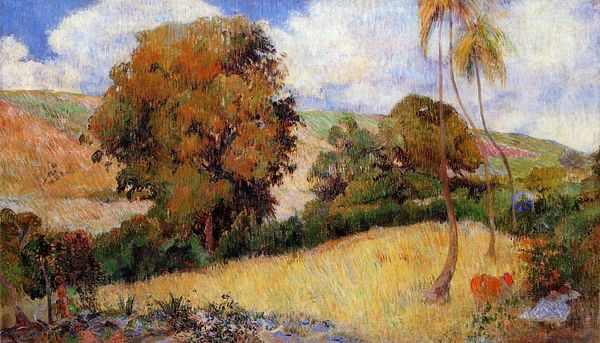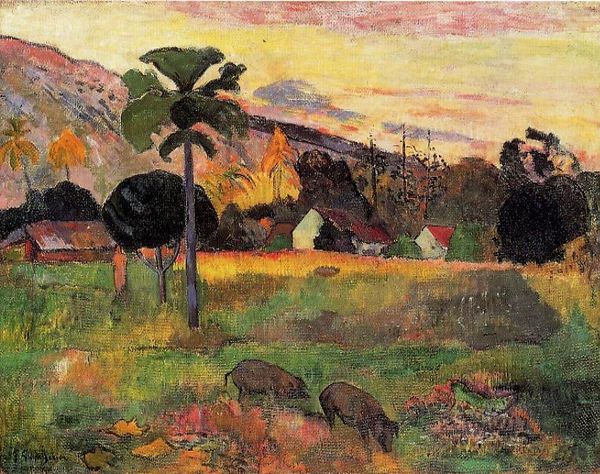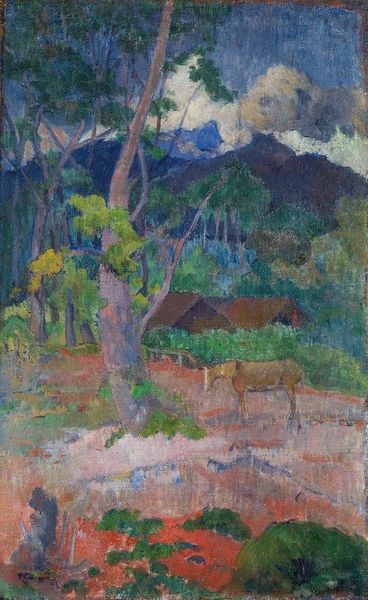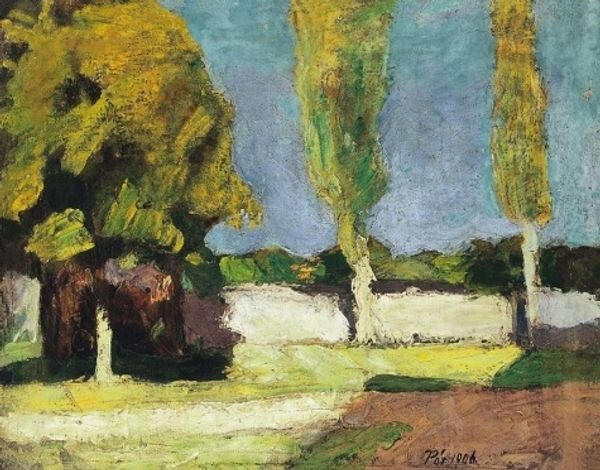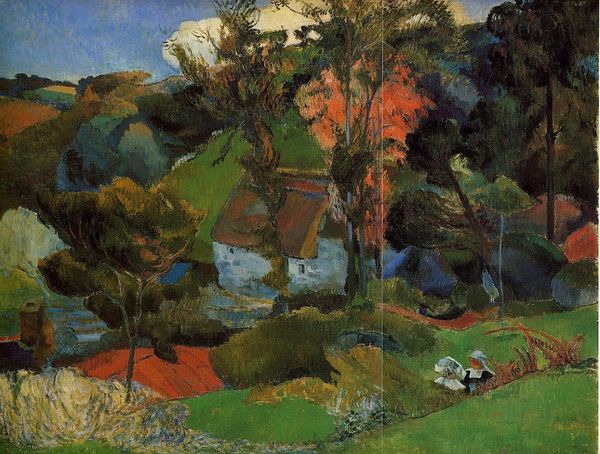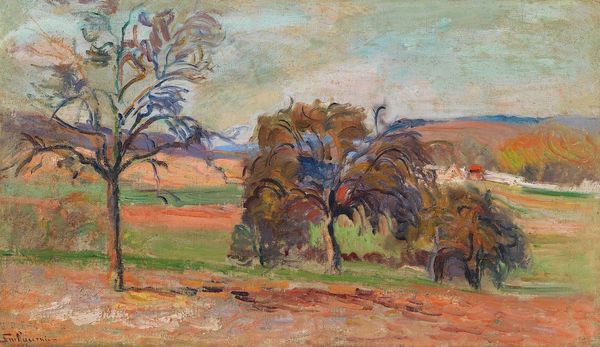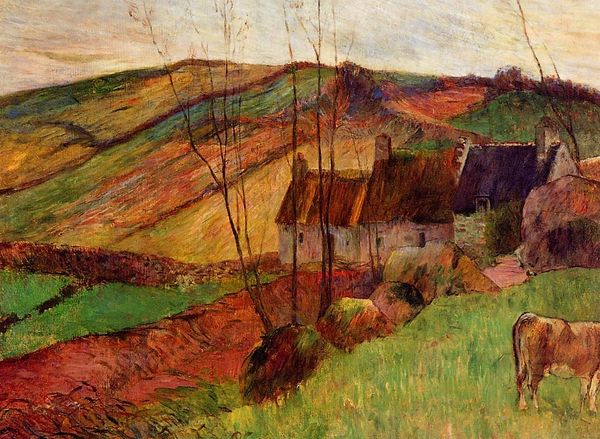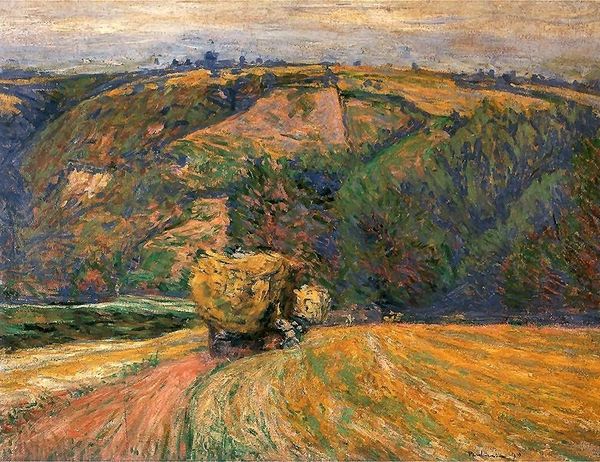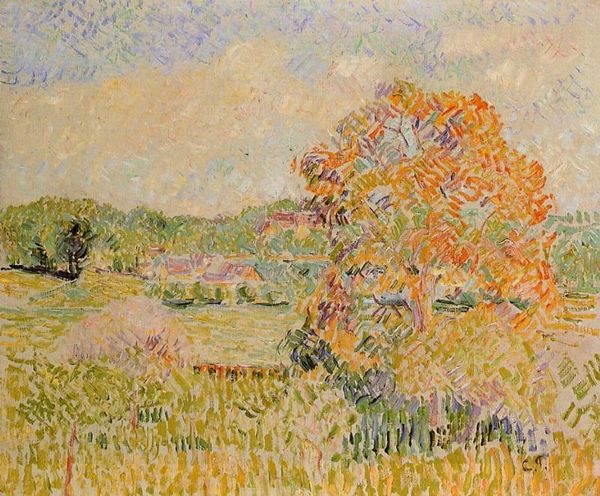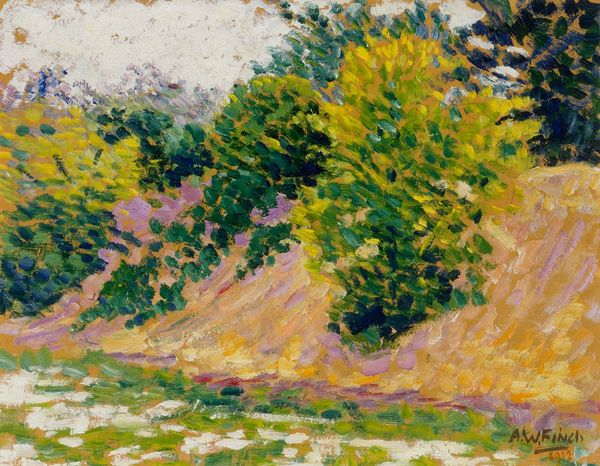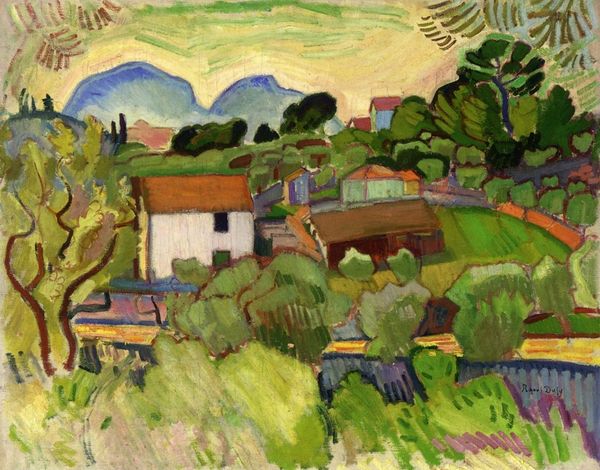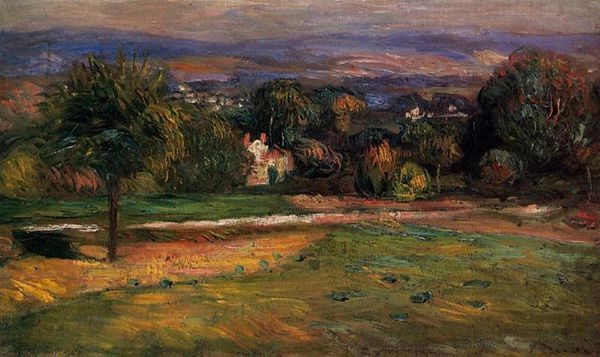
painting, oil-paint
#
tree
#
cliff
#
painting
#
french
#
oil-paint
#
landscape
#
oil painting
#
rock
#
forest
#
folk-art
#
natural-landscape
#
post-impressionism
Copyright: Public domain
Editor: Here we have Paul Gauguin's "The Little Valley," painted in 1891 with oil on canvas. Looking at it, I'm immediately struck by the contrast between the vibrant foreground and the more subdued background. What aspects of this piece stand out to you, and how would you interpret it? Curator: For me, this painting operates as a visual commentary on colonialism and Gauguin's own position within it. Painted during his first trip to Tahiti, “The Little Valley” appears on the surface to be an idyllic landscape, but it is also important to consider Gauguin's romanticized view of Polynesian culture and its impact on the native population, don't you think? Editor: I see your point. It's easy to get lost in the colors and brushstrokes without considering the broader social implications. Is it right to admire the aesthetic while critiquing its origins? Curator: That’s the central question, isn’t it? By juxtaposing the beauty of the landscape with the realities of colonization, Gauguin inadvertently invites a dialogue about cultural appropriation and the artist's responsibility to his subject. It is so important for the audiences to engage with art critically, acknowledging its beauty but also interrogating its underlying power dynamics. Do you think his portrayal reinforces existing stereotypes about the exotic "other"? Editor: It might, especially with the flattening of the figures and the emphasis on the landscape as unspoiled and ‘primitive.’ Thank you for pointing out those social and historical implications! I was initially taken in by the visual aspects alone and would have totally missed that complexity. Curator: And thank you. Considering that complexity and reflecting upon it, in my opinion, brings so much to the viewing experience!
Comments
No comments
Be the first to comment and join the conversation on the ultimate creative platform.
